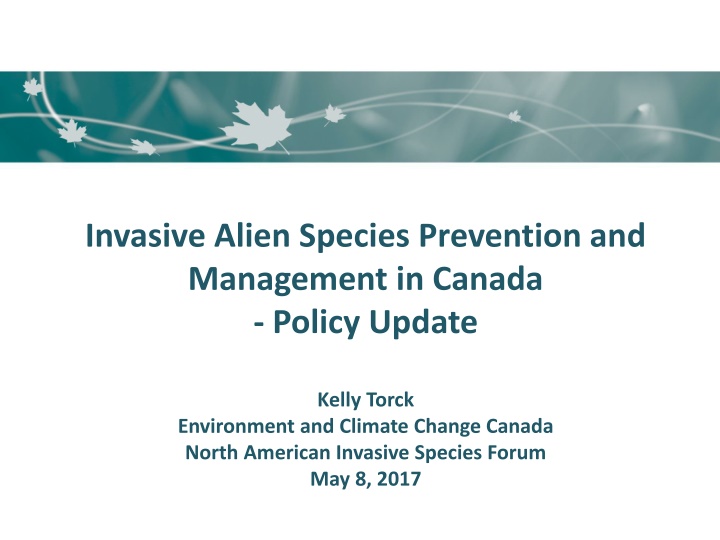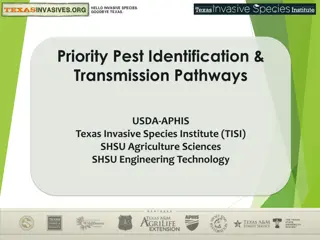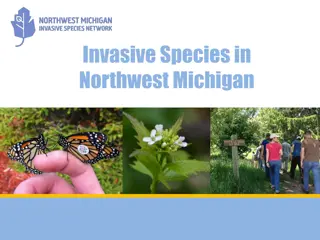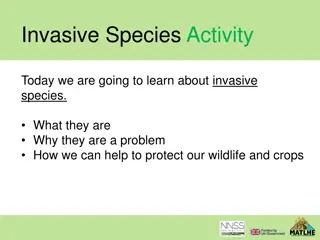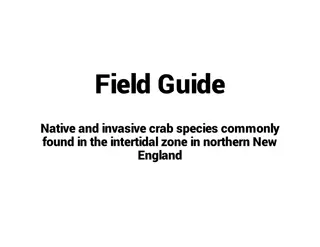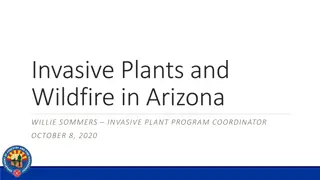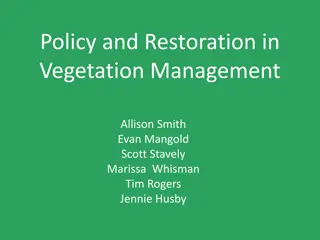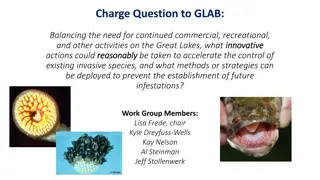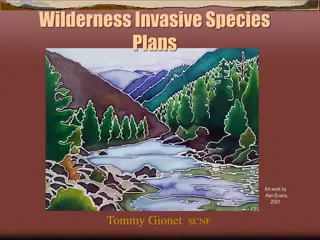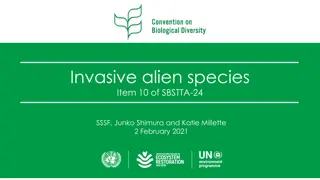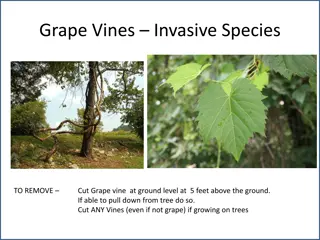Invasive Alien Species Management in Canada: Challenges and Progress
Canada's efforts in preventing and managing invasive alien species have shown considerable progress since the approval of the National Strategy in 2004. Despite the advancements in sub-national action plans and partnerships, challenges persist as the impact of invasive species on ecosystems escalates. The country aims to achieve its 2020 Biodiversity Target by implementing risk-based intervention plans. The FPT IAS Task Force recommendations seek to reinforce the commitment to the goals of the National Strategy through collaboration and evidence-based strategies.
Download Presentation

Please find below an Image/Link to download the presentation.
The content on the website is provided AS IS for your information and personal use only. It may not be sold, licensed, or shared on other websites without obtaining consent from the author.If you encounter any issues during the download, it is possible that the publisher has removed the file from their server.
You are allowed to download the files provided on this website for personal or commercial use, subject to the condition that they are used lawfully. All files are the property of their respective owners.
The content on the website is provided AS IS for your information and personal use only. It may not be sold, licensed, or shared on other websites without obtaining consent from the author.
E N D
Presentation Transcript
Invasive Alien Species Prevention and Management in Canada - Policy Update Kelly Torck Environment and Climate Change Canada North American Invasive Species Forum May 8, 2017
National Strategy on Invasive Alien Species An Invasive Alien Species Strategy for Canada was approved by federal, provincial and territorial resource Ministers in 2004 Goal: To protect Canada s aquatic and terrestrial ecosystems, and their native biological diversity and domestic plants and animals, from the risks of invasive alien species.
Considerable Progress since 2004 Development of sub-national action plans, strategies, legislation, and supporting partnerships New coordination mechanisms to encourage collaboration and information sharing Regional examples Pacific North West Economic Region Aquatic Invasive Species (AIS) Group Inter-Provincial-Territorial Agreement for Coordinated Regional Defense Against Invasive Species Conference of Great Lakes and St. Lawrence Governors and Premiers AIS Task Force FPT Committees (examples) Council of Fisheries and Aquaculture Ministers National Aquatic Invasive Species Committee; Council of Canadian Forest Ministers Forest Pest Working Group.
but Challenges Remain Invasive non-native species are a significant stressor on ecosystem functions, processes, and structure This impact is increasing as numbers [of IAS] continue to rise and their distributions continue to expand
Canadas 2020 Biodiversity Target: IAS Target 11: By 2020, pathways of invasive alien species introductions are identified, and risk-based intervention or management plans are in place for priority pathways and species Indicators Number of known new invasive alien species in Canada Percent of federally regulated foreign invasive alien species not established in Canada Number of intervention or management plans in place
Developing a renewed Path Forward FPT IAS Task Force Recommendations Report Approved by the Conservation Wildlife Biodiversity Ministers CWB Ministers Call to Action Renewed commitment to the goals of the National Strategy Work of the IAS Task Force Compiled evidence and sought advice from agencies, partners and stakeholders FPT IAS Task Force* established to identify key actions to support progress Jurisdictional interviews Report reflects the extensive consultation conducted National Workshop in Ottawa in collaboration with CCIS February 2017 Jun 2015- Jan 2017 Feb 2015 * Membership of Task Force : AB, BC, MB, NB, NWT, NT, ON, QC, SK, YK , ECCC, CFIA, DFO, NRCan
Three Recommendations to Advance FPT work on IAS The FPT IAS Task Force identified three strategic recommendations to support and advance FPT work on IAS Broad national consensus reflecting support from federal and provincial agencies, stakeholders, and other partners Emphasis on adding value to existing work: Prevention Pathway prioritization andmanagement Coordination and information sharing
Recommendation 1: Improve National Leadership and Coordination of IAS Actions Formalize the Federal-Provincial-Territorial Invasive Alien Species Task Force Focus Areas: Strengthen policy frameworks to address IAS Coordinate national studies and analysis Encourage collaboration and partnerships Example Priority Task: Work with national, U.S. and international partners in delivery of IAS programs
Recommendation 2: Improve Emergency Response to IAS Incursions Develop a National Framework for Early Detection and Rapid Response (EDRR) Initiatives Focus Areas: Provide guidance on how to respond to new invasive species Encourage development of EDRR Plans (e.g. for high risk species/taxonomic groups) Share EDRR experiences and build on lessons learned
Recommendation 3: Enable Actions by Canadians Join Forces to Combat IAS Strengthening collaboration with external partners, empowering others to take action improves outcomes for everyone. Focus Areas: Build strategic partnerships Communicate and educate Build capacity Share information and data Strengthen funding
Other Significant Developments Ontario Invasive Species Act (2015) First provincial legislation focused on IAS Aquatic Invasive Species Regulations(2016) under the federal Fisheries Act Objective: to provide a full suite of regulatory tools to prevent the introduction of aquatic invasive species (AIS) into Canadian waters and to control and manage their establishment and spread, once introduced
Next steps Establish permanent FPT committee to advance recommendations Develop a 5-year work plan, prioritizing key actions Explore and advance partnerships and collaboration at the regional level North America Arctic region Continue to monitor progress
